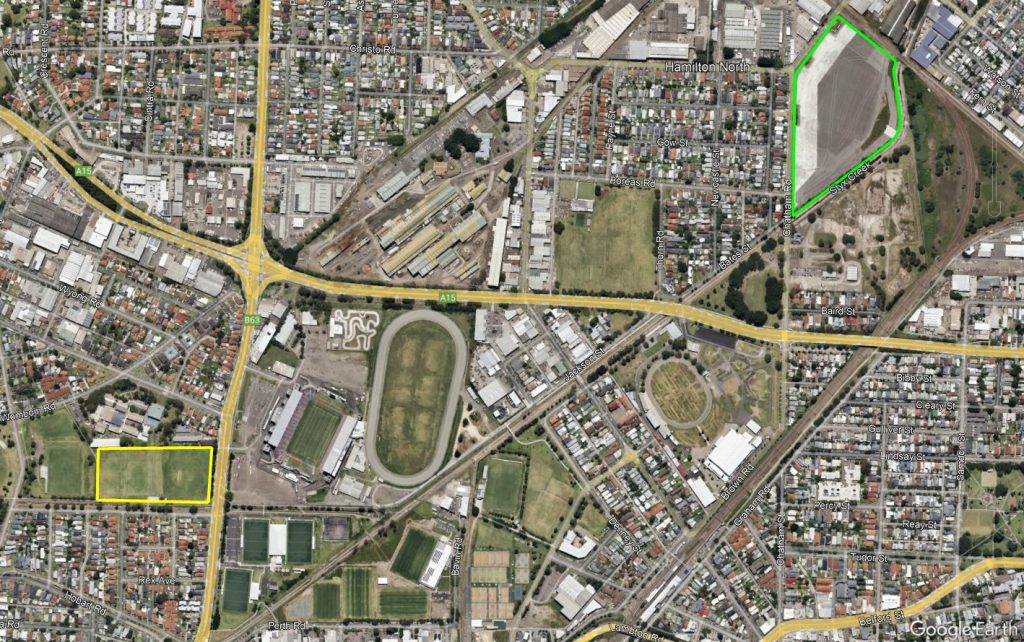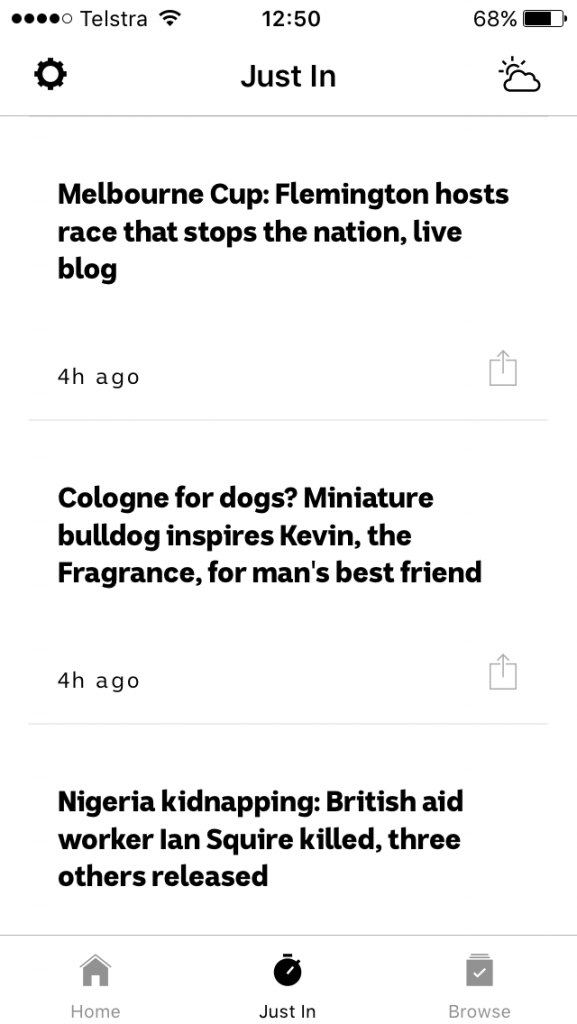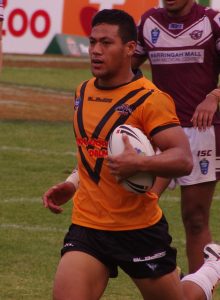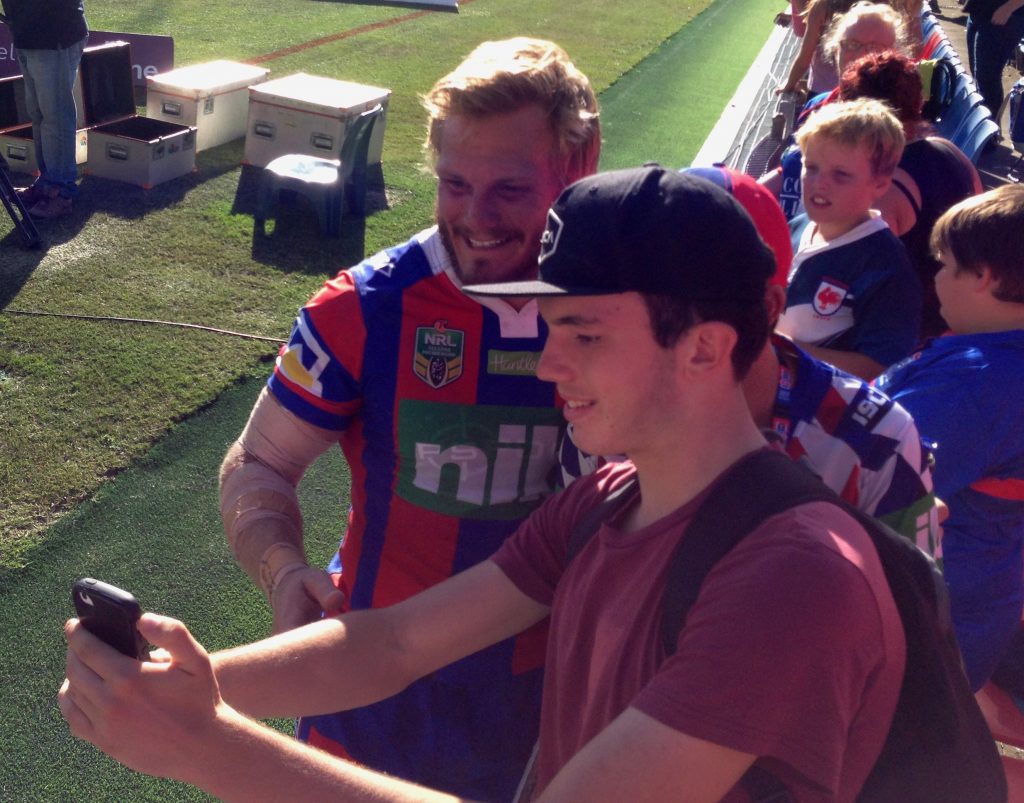A reader of this blog recently asked me about the history of the land where Wallarah and Blackley Ovals are located in New Lambton on Turton Rd. This is of relevance because of the current proposal to build a new basketball stadium on the site, resulting in the loss of two sporting fields. While there appears to be overwhelming consensus that a new basketball stadium is needed for Newcastle, there are many who are opposed to the Turton Rd site. (For my own view, read on to the end of this article.)
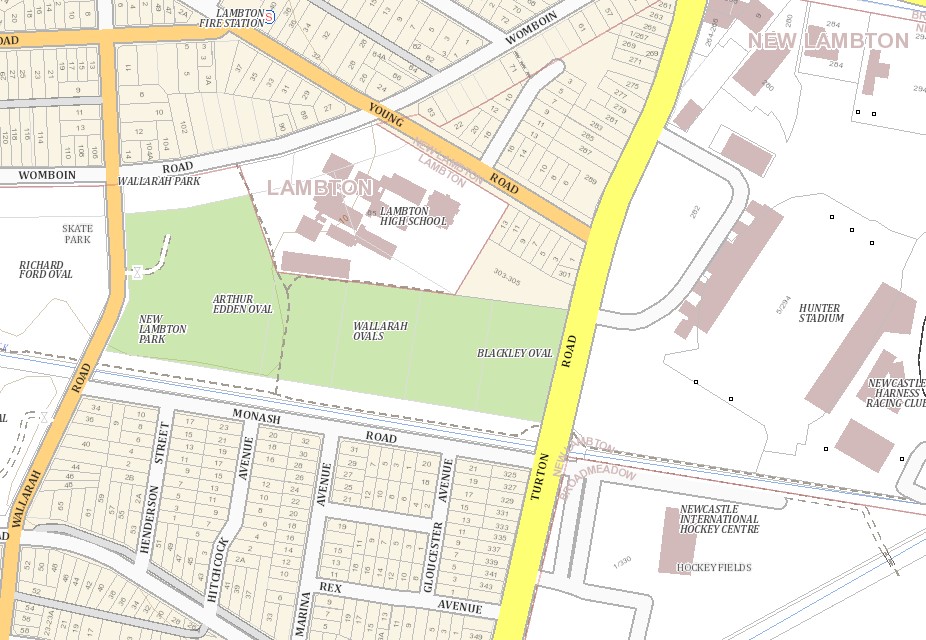
The area where the ovals are located was originally part of the Newcastle Pasturage Reserve, also known as the Commonage. As the name suggests, it was intended for the pasturing of livestock. Although many people illegally built houses on the commonage land, virtually no housing was built on low level ground near waterways, because of flooding. From 1889 the NSW government began to sell off Commonage land.
The government legally dedicated (gazetted) various bits of land for particular purposes at various times. The first reference I can find to the Blackley Oval land was in 1899, when on 26 Apr 1899 Homestead Selection Area 585 was gazetted. This consisted of multiple portions of land within the Newcastle Pasturage Reserve, including portions 2376 to 2380. But curiously just a few months later on 19 Jul 1899, Homestead Selection Area 585 was revoked, and the government retained ownership of the land.
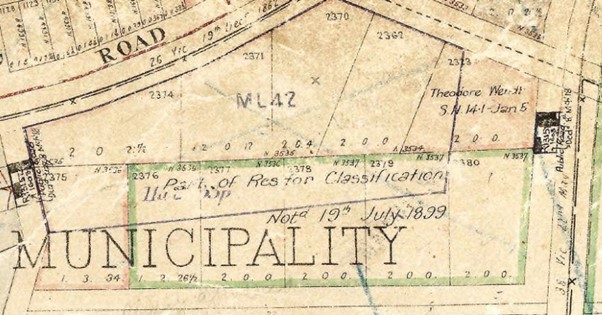
Although sale of Commonage land into private hands had been happening since 1889, a 1910 map shows almost no houses alongside the waterway – but mainly parks and pastures. The area of Blackley/Wallarah ovals is marked with the symbol for “Pasture and Furze”.
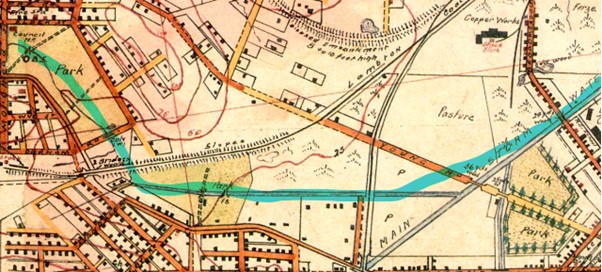
On 28 June 1935 Portions 2379 and 2380 were legally reserved for public recreation.
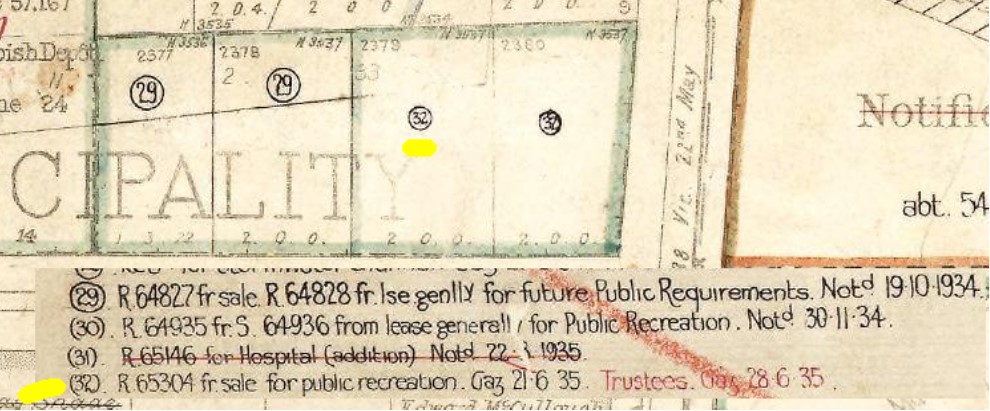
A 1938 aerial photograph shows a sporting field at the location of Blackley Oval.
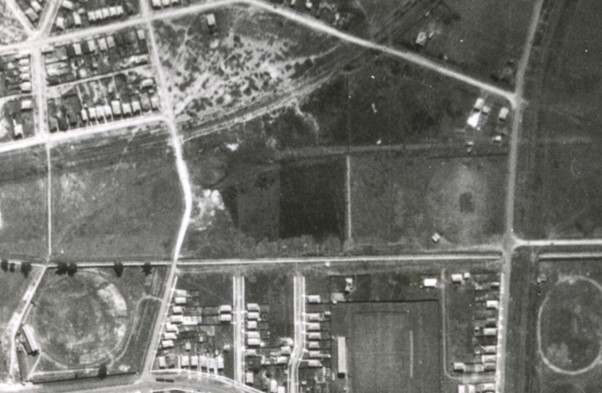
A 1944 aerial photograph shows a sporting oval (Blackley) and WW2 gun emplacements (possibly decoy guns) where Wallarah Oval is today.
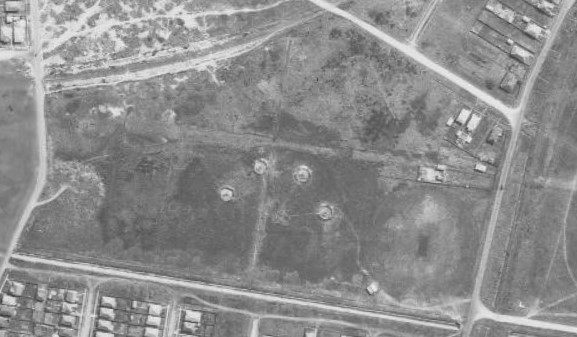
In 1948, Newcastle Council approved the naming of “Blackley Oval” …
An application by Newcastle Police and Citizens’ Boys’ Club to have land at District Park known as Quinlan and Blackley Ovals (previously Nos. 9 and 10 ovals) vested in the club was granted by Greater Newcastle Council last night.
Newcastle Morning Herald and Miners’ Advocate, 17 March 1948.
This snippet indicates that Blackley Oval originally had the unimaginative name of “No. 10 Oval”. Was the No. 9 oval (renamed to Quinlan oval) the field to the west of Blackley Oval? If so when and why was it renamed to Wallarah Oval? I suspect it was not, as a 1954 aerial photograph shows that the only field north of the drain is Blackley Oval.
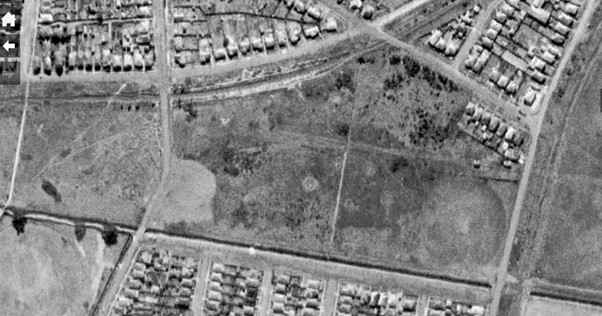
A 1966 aerial photograph shows new fields at Ford Oval and Arthur Edden Oval, but still no field at the location of Wallarah Oval.
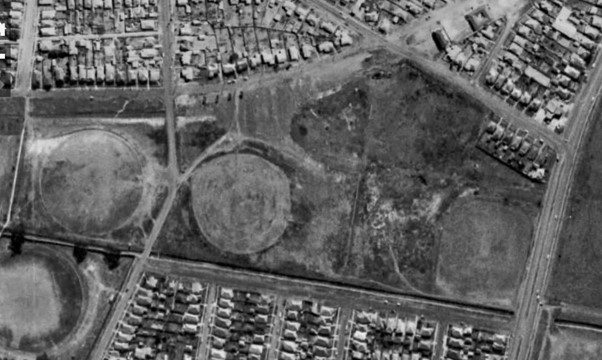
By 1974 there are sports fields at the location of Wallarah Oval, and Lambton High School has been built.
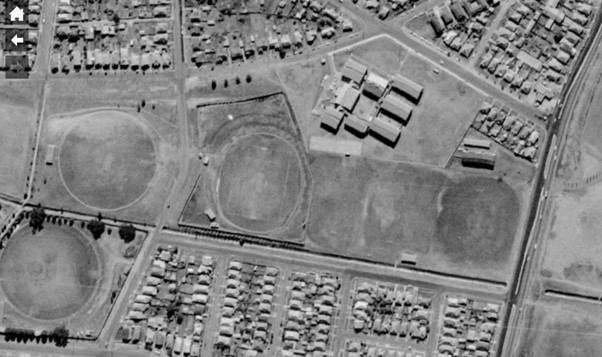
The Geographical Names Board assigned the name “Wallarah Ovals” to the sporting reserve in December 1977.
My view on the proposed location
Like most people, I agree that a new basketball stadium is needed. But I strongly disagree with the currently proposed location on Turton Rd, for three main reasons.
- Green space is precious. Once green space is lost to development, it is never regained. With global temperatures rising, if we are to have cities that are pleasant to live in we must be super vigilant and protective of green space.
- The proposal benefits one sporting code at the expense of other sporting codes who currently use those fields. The proposal is a “rob Peter to pay Paul” scenario.
- Parking and traffic in the area is already problematic when there is a big event on at Hunter Stadium. If the basketball stadium was built across the road, and both venues had an event at the same time the traffic situation would be a nightmare.
So if not Turton Rd, then where could a new basketball stadium be built? Looking at the map I wonder about the old gasworks site in Hamilton North. It’s close to the sporting/entertainment precinct at Broadmeadow, is close to public transport, does not take away green space, and has oodles of room for parking. There may be good reasons why this location is not practical (cost, availability, engineering limitations), but it would be worth considering.
